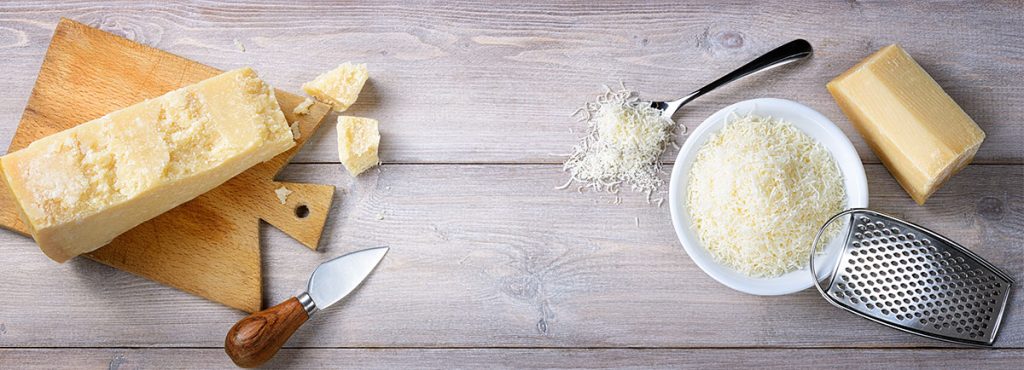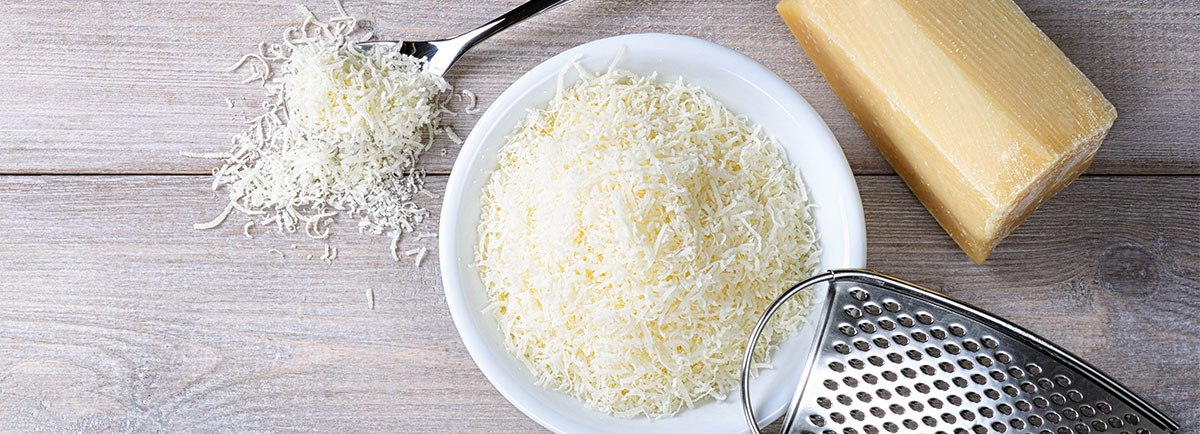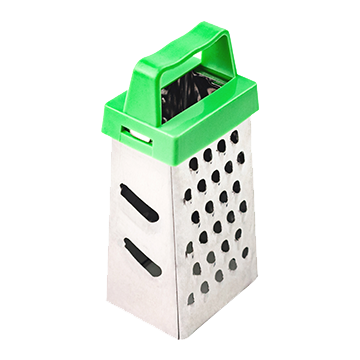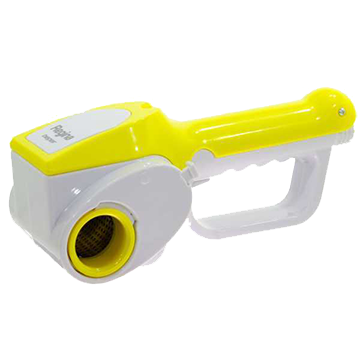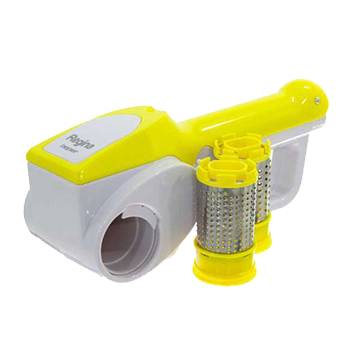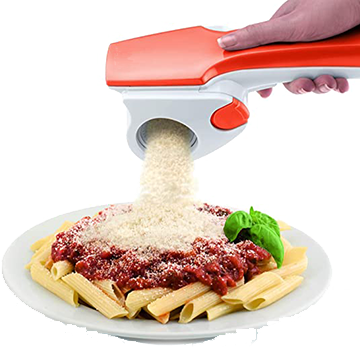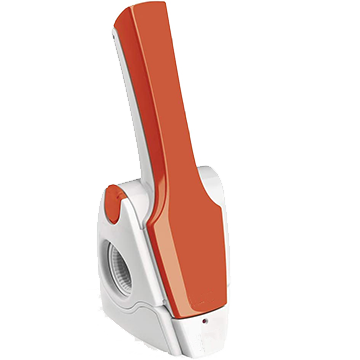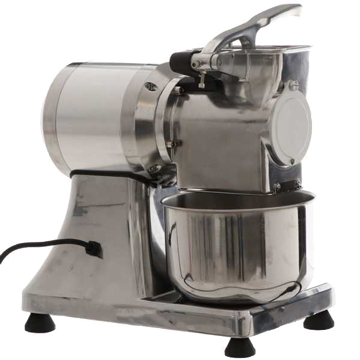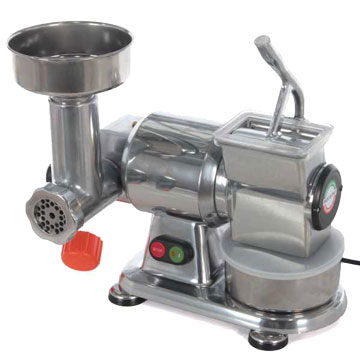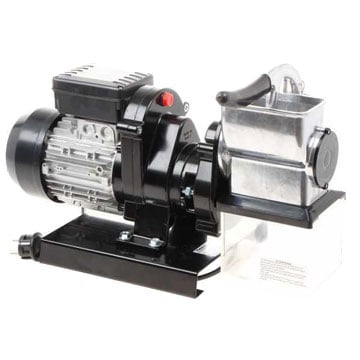A comprehensive guide to purchasing the best electric cheese grater, with all the basics you need to know before choosing one.
The Complete Guide to help you choose the Best Electric Cheese Grater
by the Real Experts of Kitchen Equipment
Sprinkling a dish of pasta with good mature cheese or using breadcrumbs in a recipe can enhance the flavour of our dishes and give them a special touch.
Cooking enthusiasts know that grating cheese by hand for many dishes is time-consuming, tiring and very often food-wasting (especially if you try to speed things up).
For many years now, the electric cheese grater is a very widespread kitchen tool not only for professionals, but also for home cooking enthusiasts, thanks to its usefulness and ease of use.
This small kitchen appliance allows to quickly grate bread, cheese and other foods, simply by choosing the product to be processed (for example, a small piece of pecorino or Parmigiano Reggiano cheese), inserting it into the machine and pressing the start button. In no time at all, this little kitchen tool will shred and powder your food, so it is ready to be used in many recipes.
This is undoubtedly a useful, convenient and very practical kitchen tool, but choosing the model that best suit one’s needs is no easy task, as numerous are the models on the market, with different features to be taken into account. For example:
electric or battery-powered? Made of plastic or stainless steel? Standard or multi tool? Although the cheese grater is characterised by a great simplicity of construction and it is not at all difficult to use, there are various types and models that differ in various ways (e.g. size, power, materials, design, etc.).
The purpose of this purchasing guide is to shed some light on the various characteristics of this type of kitchen tool, showing all the fundamental aspects that are worth knowing before choosing to buy an electric cheese grater.
CONTENTS
1. Why buy an electric cheese grater?
If we need grated cheese or breadcrumbs to use in the preparation of a dish, there are basically three solutions available:
- the easiest and least tiring is to buy the product already grated and ready to use. A very practical solution, but not very cost-effective. As the name suggests, the classic bagged cheese mix that we find in supermarkets is a mixture of cheeses, grated in large quantities on an industrial scale, bagged, distributed throughout the country and sold at a premium price.
In this case, as well as not being able to choose the exact type and quality of cheese, we must be aware that it is unlikely to have the same taste and freshness as freshly grated cheese. - the second option is the “traditional” one, i.e. grating cheese by hand using a classic manual cheese grater. As mentioned earlier, grating cheese by hand is a good solution for small portions, but it becomes a tiring job if a large quantity is required.
- last but not least, the most practical and cost-effective solution that can guarantee excellent, selected, freshly grated cheese in a short time and without any effort, is using an electric cheese grater.
With this small kitchen tool, we can quickly and stress-free grate cheese, stale bread for breadcrumbs or vegetables au gratin, and other foodstuffs for our recipes.

Manual cheese grater 
Battery-powered cheese grater 
Electric cheese graters
The great advantages of using an electric cheese grater are (in the case of cheese such as parmesan cheese, Parmigiano Reggiano, taleggio cheese, pecorino, etc.):
- The quality of the product to be grated
The ability to choose independently what to grate means that the quality of the product solely depends on us as users; - The quality of the grated product in terms of freshness and intensity of flavour
It is clear that a freshly grated cheese sprinkled over a dish is far better than a packaged cheese grated days before; - The working speed
A normal cheese grater takes just a few seconds to do its job; - The energies of the user
Hand-grating a 1 kg piece of mature Parmesan cheese all at once may seem like a simple operation, but it is actually a very long and laborious process.
It is no coincidence that a good electric cheese grater must comply with the points listed above, providing speed, quality and ease of use.
2. Power supplies
In addition to the well-known “manual” models, there are two types of cheese grater on the market:
electric cheese graters, which are powered by a mains socket, and battery-powered cheese graters, which are smaller and much more easy to handle.
2.1. Battery-powered cheese grater
As already mentioned, battery-powered electric cheese graters are much smaller than other models, making them less bulky and practical, especially when there is not a lot of space available in the kitchen.
These cheese graters are called “table cheese graters” for their practicality and the fact that their compactness and lightness, as well as the type of power supply, allow to use them sitting at the table and grate cheese directly on food, without wires or having to make room for bulkier machines.
Being the “domestic” type par excellence, both for reasons linked to practicality of use and for its size and weight, it is one of the best-selling models on the market (in the range of kitchen machines for domestic and not heavy-duty use).
There are a few key aspects to consider when buying a battery-powered model: battery life and charging time. In general, a good battery-powered model has a running time of about 90 minutes (which corresponds to about 1.5 kg of grated product) and needs a medium-long time to be recharged, ranging from 8 to 12 hours.
Finally, another very important aspect to consider when purchasing this type of kitchen tool is the ease of battery removal and replacement in the event of a malfunction. It is clear that a model with a removable battery will allow the user to easily replace it without having to throw away the whole machine the first time it breaks down.
2.2. Electric cheese graters
Electric cheese graters are generally more performing and efficient than battery-powered models; in fact, this category includes all semi-professional, heavy-duty and industrial machines (with the exception of a few models), especially designed for more intensive use and which require a motor with greater power, as well as resistant and reliable materials. This type of cheese graters are more bulky and less practical than battery-powered models. It features motors with a power of up to 600/650 Watts in the most heavy-duty models.

RGV MAXI VIP 8G / S Red Electric Cheese Grater 
AgriEuro Premium Line New Silver EVO75 Electric Cheese Grater 
New OMRA OM-3000-AL Electric Cheese Grater
The disadvantage of electric graters is that they can not be handled as easily as battery-powered models, as they have to be connected to an electrical outlet; furthermore, some electric cheese graters, heavy-duty and industrial models in particular, are considerably heavier, in some cases can weight up to 10 kg.
As mentioned above, the second drawback concerns size and weight. Indeed, these models have a more substantial weight due to the motor, which is larger and more powerful than the other type, and the materials used, which, unlike battery-powered cheese graters, has fewer plastic components and more steel.
3. Weight and dimensions
One of the most important elements to consider when choosing the best cheese grater is the size. The space available and the intended use are the main elements to take into account and according to which the most suitable model needs to be chosen.
The less bulky types are undoubtedly the manual and battery-powered cheese graters, which can range from 7 to 10 cm in the classic manual models, up to 20 cm in height by 12 cm in width in the “table” models. It is no coincidence that the latter are designed to be easily transported and stored in a very small space.
On the other hand, the market offers “kitchen-use” and heavy-duty models, which are larger and heavier than the above-mentioned models. Heavy-duty cheese graters come with an increased weight and overall dimensions (indeed, they can reach 40 cm in height, width and depth), and are more “demanding” in terms of taken-up space and practicality.
While the user-friendly manual cheese graters and some battery-powered models can even be stored in a drawer in our kitchen, the larger and heavier models, such as heavy-duty ones, must have a pre-established location in our working area or surface, which should be easily accessible and comfortable for the user, as well as close to a power outlet.
4. Materials
The quality of the materials is also very important for this type of kitchen tools.
As with other household appliances, it is essential to take into account the materials of the machine to be purchased (stainless steel, plastic, metal, hardened steel, etc.). It is obvious that a household appliance designed and manufactured with materials resistant to the heaviest use will be still efficient and properly performing even after many years of operation, unlike products built with less care in terms of construction materials, which instead will show specific limitations in terms of use and durability.
Choosing a machine made of sturdy and resistant materials, such as stainless steel, pressurized aluminium or even hard plastic, is just as important from the point of view of food safety, as they will deteriorate much slower than other low-quality materials, producing a grated product that is always safe and of high quality.
As we mentioned a few lines above, among the best materials there are:
- Stainless steel (especially recommended for cheese grater accessories and rollers)
- Die-cast aluminium (recommended for the machine body)
- Hard plastic (recommended for the machine body)

RGV MAXI VIP 12 G/S
in Stainless Steel
RGV MAXI VIP 8 G/S
in Die-cast Aluminium
AgriEuro TopLine BIG 12
in Aluminium
New OMRA OM-2900 BI
in Plastic
5. Accessories
Another very important element concerns the accessories of the electric cheese grater. In fact, some models (usually those of medium-high range) can be equipped with accessories, such as special rollers and blades for different types of cuts, and many others, which make these kitchen appliances very versatile.
With regard to blades and rollers, it is clear that it is possible to obtain grated or cut products in different ways, with different thicknesses or shapes, providing the user with the possibility to vary or use the same food but grated in a different way.
Finally, electric cheese graters also come in the so-called “multi tool” versions, i.e. designed to perform several different food processing. For example, some models are designed to efficiently perform the function of a cheese grater, but also a vegetable chopper, meat mincer, tomato press, pasta press and even a dough mixer.

AgriEuro Top Line N.5 Triton 2 in 1
Cheese Grater and Meat Mincer
Reber 9501N N.5
5 in 1 Multi Tool
RGV Duetto Plus 3 in 1
Cheese Grater, Tomato Press and Meat Mincer
6. Cleaning and Maintenance
When it comes to cooking and food processing, it is always wise to pay attention to hygiene. It is therefore very important to understand how the cheese grater can be properly cleaned after each use.
Cleaning is a fundamental aspect, which varies from model to model. For example, some models can be washed in their entirety without being disassembled, while others may have removable components, such as rollers, blades and bowls, which must be separated from the machine body before they can be washed under water without any problem or along with cutlery, plates and glasses directly in the dishwasher.
7. Brands
In conclusion, before proceeding with the purchase of a grating machine, we would like to point out to you what the leading experts in kitchen machinery consider to be the best manufacturers of electric cheese graters.
As we already stressed several times in other purchasing guides, it is important to rely on brands that are well-known and reliable for safety and quality reasons.
The brands we recommend evaluating when it comes to buying a cheese grater, whether for domestic or professional use, are as follows: RGV, Reber, Imetec, Fama Industrie, Ariete, Tre Spade, New OMRA and Tibek.
